Did you know that winter is the best time of all to prune your grapes to prepare them for an amazing summer harvest next year?
One thing is for sure, whether you’re just starting out growing grape vines or already have older vines on your property, pruning is an essential part for keeping grapes healthy and productive. But although it’s not necessarily difficult to do – knowing when to prune them is!
Unlike many other perennial plants that are best pruned in early spring or fall, grapes need to be trimmed back in the winter months. That is because when pruning grape vines, the task always needs to be performed while the plants are completely dormant. Otherwise, you risk damaging the vines – and your next crop.
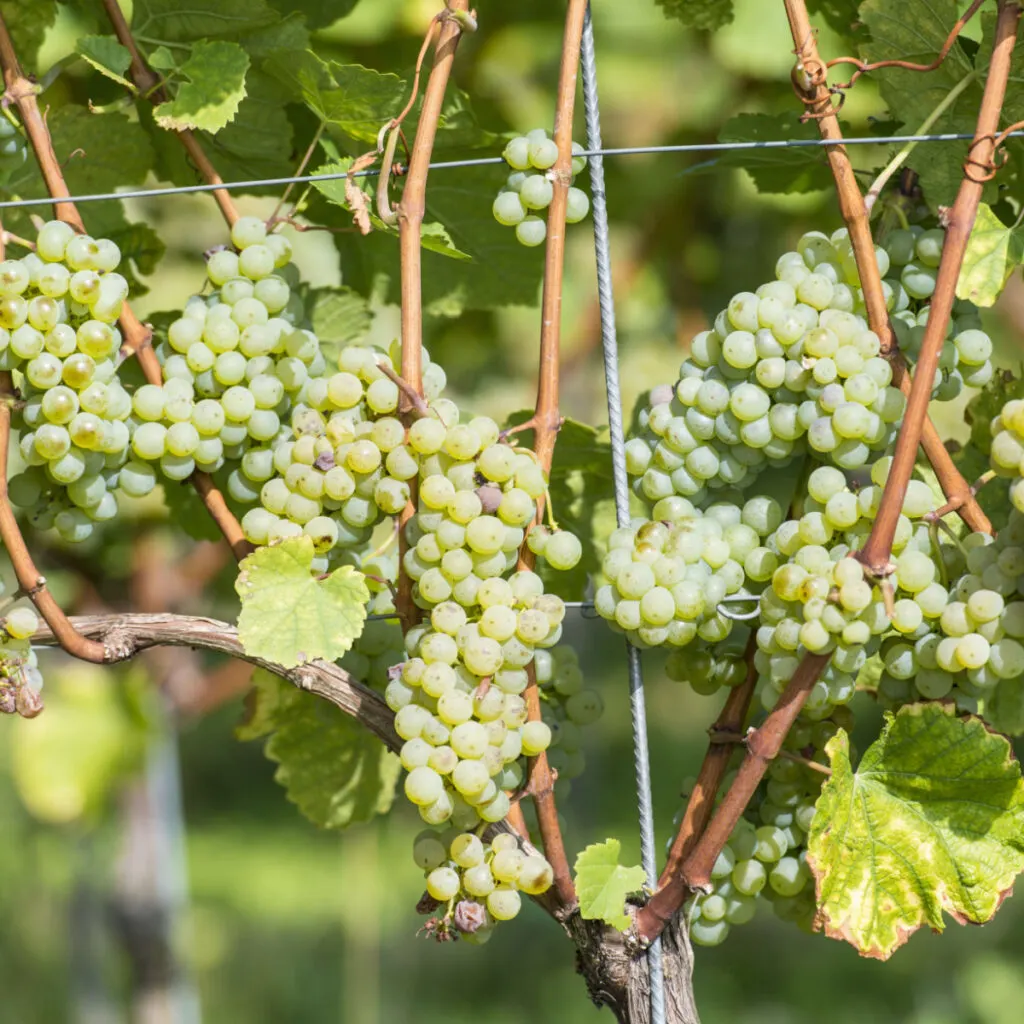
Unfortunately, pruning while plants are budding, actively growing, or fruiting will cause undue harm and stress to the plant. Even in the fall, although vines may look like they are dormant, they are still producing and using up nutrients and resources – and pruning them at this point can cause damage as well.
But by mid to late winter- usually by late December up to early March, the plants are totally at rest. And that means it’s time to jump into action!
Why Prune Grape Vines – How To Prune Grape Vines In The Winter
There are a lot of great reasons why you should prune your grape vines yearly. It helps in terms of not only the health of the plant, but also in the production of fruit.
Pruning helps to keep the plants from growing out of control. Grape vines have a tendency to grow and expand at such a rapid rate they can quickly get out of hand.
Even more, as you will see later, those older stems (also called canes), can’t produce fruit. Stems that are older therefore are simply taking up valuable resources and nutrients. Nutrients that the plant should be be spending on new growth and fruit production instead.
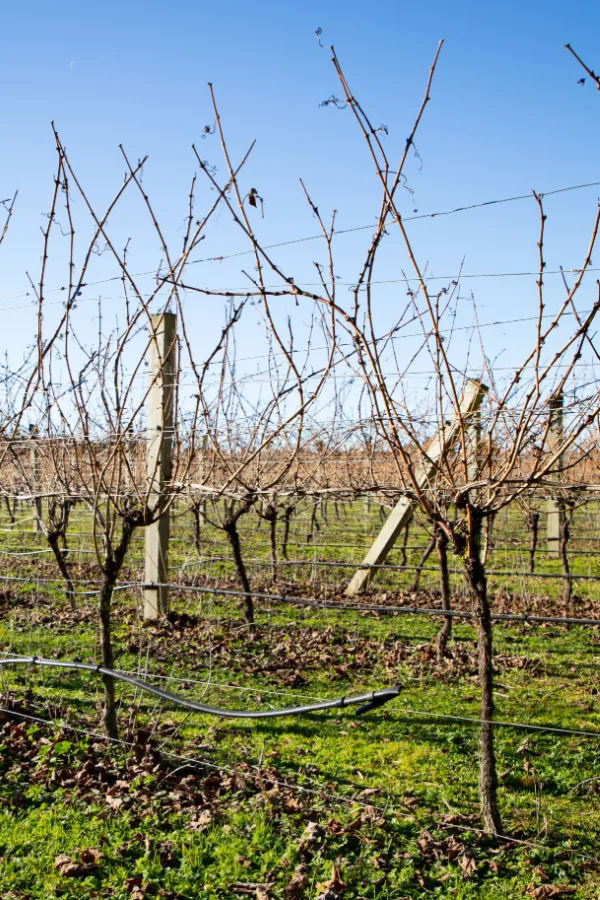
In addition, overgrowth can cause plants to struggle to receive enough sunlight. This will result in small and less flavorful fruit. And if all of that wasn’t enough reason to prune – without proper airflow and sunlight, the plants will be more susceptible to disease and pests.
Coincidentally, these are the exact reasons that in addition to grape vines, you should also prune apple, cherry, plum and other fruit trees in the winter months. (See our article, “How To Prune Fruit Trees In The Winter”)
How To Prune Grapes In The Winter
Now that we have covered the “why” of pruning, let’s cover exactly how to do it. Believe it or not, the biggest issue for most gardeners is that they don’t prune their vines heavily enough. A light pruning simply doesn’t prepare plants for a successful growing season. Both in terms of the quantity or flavor of the grapes.
The goal of grape pruning is to remove as much of the old wood as possible while still maintaining the shape and overall beauty of the grape vines. The result is strong and healthy plants that will produce delicious fruit the following summer.

There are two main methods for pruning grapes. The method you use will depend on the age and the stage that your plants are in. For newly planted and young vines, you will need to use Cane pruning. For already established and older vines, you will need to use Spur pruning.
We’ll walk you through what both are and how to do each type in a moment, but first, it’s important to first know how grapes grow and produce in order to know how and where to prune them.
How A Grape Vine Grows – How To Prune Grapes In The Winter
Before you can jump into pruning grape plants, you first need to know a little bit about how the plant grows and the basic terms used to describe the different parts of the plant. It may sound confusing, but it is really about understanding 4 simple parts of a grape vine – the trunk, cordons, spurs and canes.
The base or main part of the plant that comes out of the ground is called the trunk. From the trunk, the grape plant will veer off in different directions, ideally in a “T” or “Y” shape if the plant has been properly pruned. These stems are called cordons.
From the cordons, you have spurs, and it’s the spurs that produce canes. On each of the canes you can see tiny buds all along the stem. It’s from these buds that the new grapes will grow.

How To Prune Canes & Spurs – How To Prune Grapes In The Winter
It’s important to note again that for young vines you will need to use Cane pruning – and for older vines, you will need to use Spur pruning. We have directions below for both, including if your vines are not on a traditional wire or trellis.
The main items needed for pruning are hand pruners or snips, loppers for thicker branches, and gloves. Make sure that the blades are sharp and have been disinfected thoroughly before using. (Affiliate Product Link: Fiskars Loppers)
Something to keep in mind while pruning is that grapes are only produced on the last year’s canes. You can easily identify the new growth because it will be a lighter brown and typically a bit smoother than the older growth. If your vines are older and have canes that are more than a year old, you will need to remove them.
Cane Pruning – How To Prune Grapes In The Winter
The goal of growing grape vines is to train them into an iconic “T” shape. The base of the “T” is made up of the trunk and the top bar is created by two separate mature canes (called Cordons).
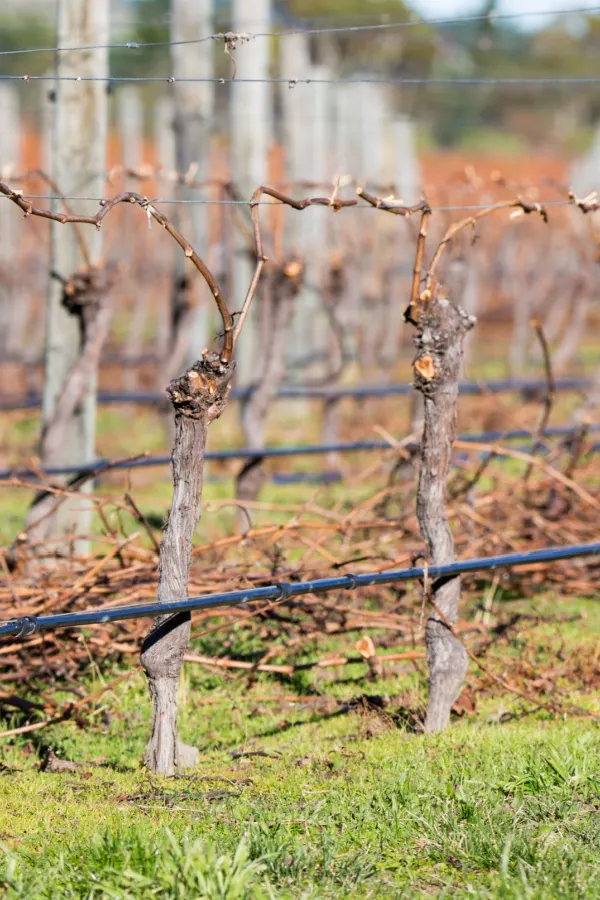
When grape vines are young, they are not tall enough or big enough to create a full “T” shape. Instead, they make up more of a “Y” shape. Cane pruning helps to get them to the stage where they will be able to become established.
Choose two one-year-old canes growing from the trunk that are the biggest, strongest, and healthiest out of all the canes produced during that growing season. Remove all of the other canes back to where they meet the trunk.
On the canes that you keep, trim them so they are only a few feet long but still able to reach the support wire. This prevents the plant from growing long and leggy. Instead, the vines can grow wider and thus become sturdier.
Take each cane and wind it around the support wire in opposite directions. It should resemble a “T” shape. If you need to, attach it to the wire or support using plant ties. (Affiliate Product Link; Soft Garden Twist Ties)
As the years pass, your plant will grow taller and larger. Eventually, one of these sets of one-year-old canes will become the established cordon vines. You can then move on to spur pruning.
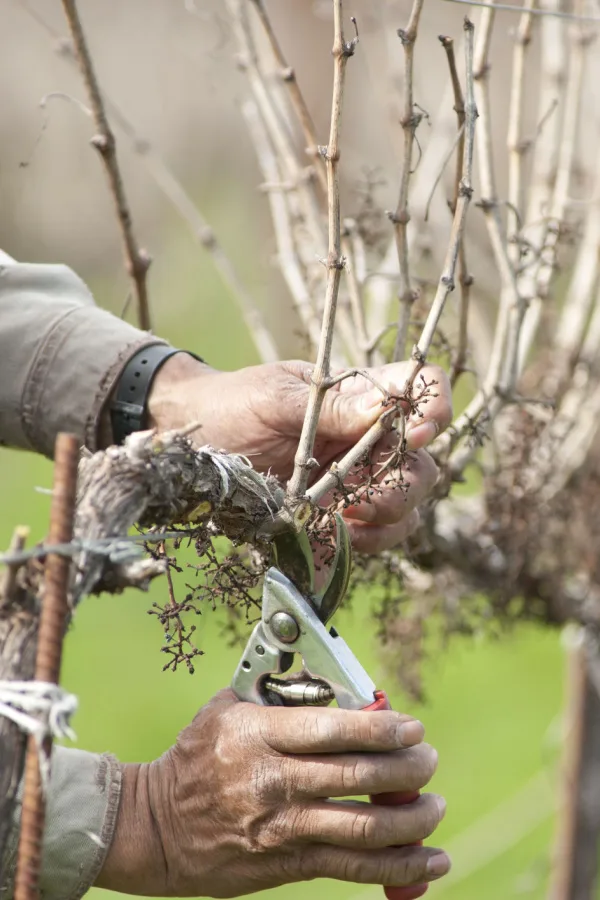
Non-Traditional Support Systems
If you are not using a traditional wire support system such as a trellis or pergola, you can leave up to four strong canes instead of two. However, keep no more than that. Anything above four will result in a reduction in fruit production in the following growing season.
Spur Pruning – How To Prune Grapes In The Winter
If your grape plants already have two older Cordon vines that complete the “T” shape, then you need to perform Spur pruning.
The goal of Spur pruning is to leave upright spurs that contain healthy, one-year-old canes. You should space the spurs about every 6 to 12 inches apart to give each new growth plenty of space and airflow.
Reduce each spur down to a single, healthy one-year-old cane. Cut that cane back, leaving behind two buds still attached. If you have two canes growing from the same spur, choose the one that is the straightest, is growing upright, and is the biggest.
Cut all other canes all the way back to the spur or cordon. In addition, remove any spurs or canes that are pointing down or that have damage to them.
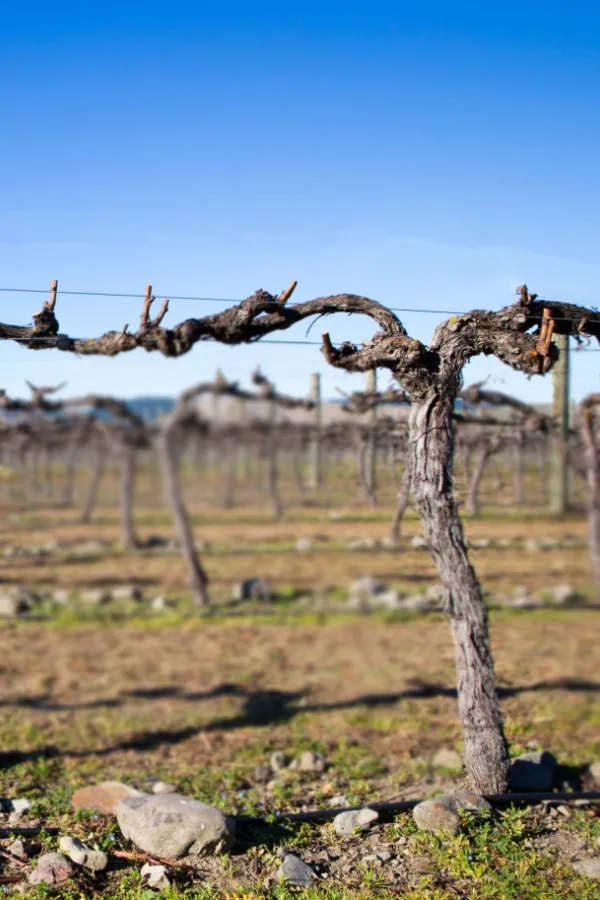
In addition, you will likely need to cut off the ends of the cordons so they don’t grow too long. If you have multiple plants growing, don’t allow neighboring cordons to touch.
If a spur is getting too long, leave behind a nearby cane to grow. When it’s time to prune next year, you can then remove the tall spur. The nearby cane will become your new spur.
The End Result – How To Prune Grapes In The Winter
The end result will be the two long cordons, with multiple spurs growing upright and evenly spaced apart. Each spur will have a single one-year-old cane with two buds attached.
Winter pruning should occur each year no matter how old or out of control your grape vines have become. As long as you complete this simple task each year, the grape vines will continue to reward you with an amazing grape harvest for many years to come!
Follow Our Facebook Page For Even More Great Tips! Simple Garden Life Facebook Page
Simple Garden Life is a website dedicated to keeping gardening fun, simple and enjoyable! We publish two new articles each week along with a new garden podcast episode every two weeks. This article may contain affiliate links.
